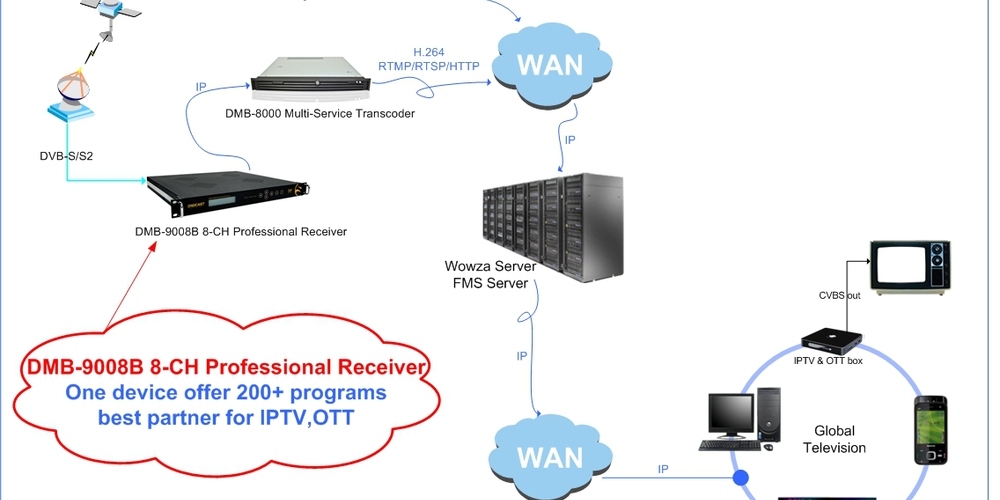Service providers need to be capable of providing quadruple service to fulfill the changing demand of clients today. Quadruple or fantastic four services include television (video), telephone (voice), internet (data) and wireless service provision (mobility). Broadcasters experience ever-changing technology, distribution alternatives, format choices, and fluctuating standards.

Digital video can be broadcasted via –
- Satellite
- Through IP networks
- On air
DVB-S2 modulations and H.264 compression technologies provide appealing ways of decreasing operation costs and enhance quality or add new services for subscribers. Moreover, the analog to digital conversion topologies and acceptance of HD services creates an intermediary need to simultaneously incorporate new equipment, whilst supporting inherited devices and services endlessly in the delivery chain.
The video distribution infrastructures transporting compressed video in HD or SD get encoded with diverse compression algorithms. In addition, get packed with variety of audio and subsidiary data services.
This assortment of material received by the service provider has to be normalized to be delivered through the entire network. Digital cable system works on the incoming signals and re-converts them for digital distribution.
The cable headend absorbs the signals from variety of sources –
- Analog local programming
- Satellite feeds
- DTV broadcasts (off the air)
- Direct feeds over fiber (from broadcast station)
- WAN
- Microwave
The incoming signals are converted into (ASI) MPEG-2 transport stream by the receivers and encoders. The streams have to undergo several processes like –
- Grooming
- Rate shaping
- Re-multiplexing
- Metadata processing
- Encryption
The next phase is to modulate the data-stream and distribute the content to clients over hybrid coax/fiber.
Cable TV headend is vital because it is the source of every signal and heart of broadcasting network. Therefore, network owners invest considerable funds on headend. They take the existing needs of their project and even consider future requirements, while investing.
The revised Cable TV Law commands that all the signal distribution on Cable networks has to compulsorily be in digital mode. Cable system digitization is extremely important because it ensures to provide optimal bandwidth usage, increase in providing value added services, and allowing everyone to adopt latest technology in broadcasting & distribution sector.
HITS (Head-In-The-Sky)
HITS technology allows digitization to be addressed and achieved all through the country in a single stoke with very low investment when compared to established digital headends in every city. HITS with subscriber management and CAS (conditional access system) can monitor & control all the accounting, billing as well as cable distribution, all around the country. This technology helps to conserve energy and saves on carbon footprints.
Headends for IPTV
Headend is the foundation that defines IPTV experience because it receives content from many sources and converts it into seamless mix of local & national TV programs, ads, and IVS. The success of IPTV offering depends on the kind of headend selected.
IPTV headend is responsible for obtaining & processing, encoding as well as managing the video content. It allows you to handle all the challenges, which need to be addressed to create superior video output as demanded by subscribers.
Video encoder and transcoder
Video picture quality depends on encode solution. Even though the carrier includes outstanding video acquirement, processing, and management solutions, the choice of video encoders finally decide the IPTV distribution quality.
Video transcode solves many challenges of multiple formats in the distribution network, so as to normalize signals for fulfilling end-to-end network needs and enhance bandwidth usage efficiency.










Comments are closed.